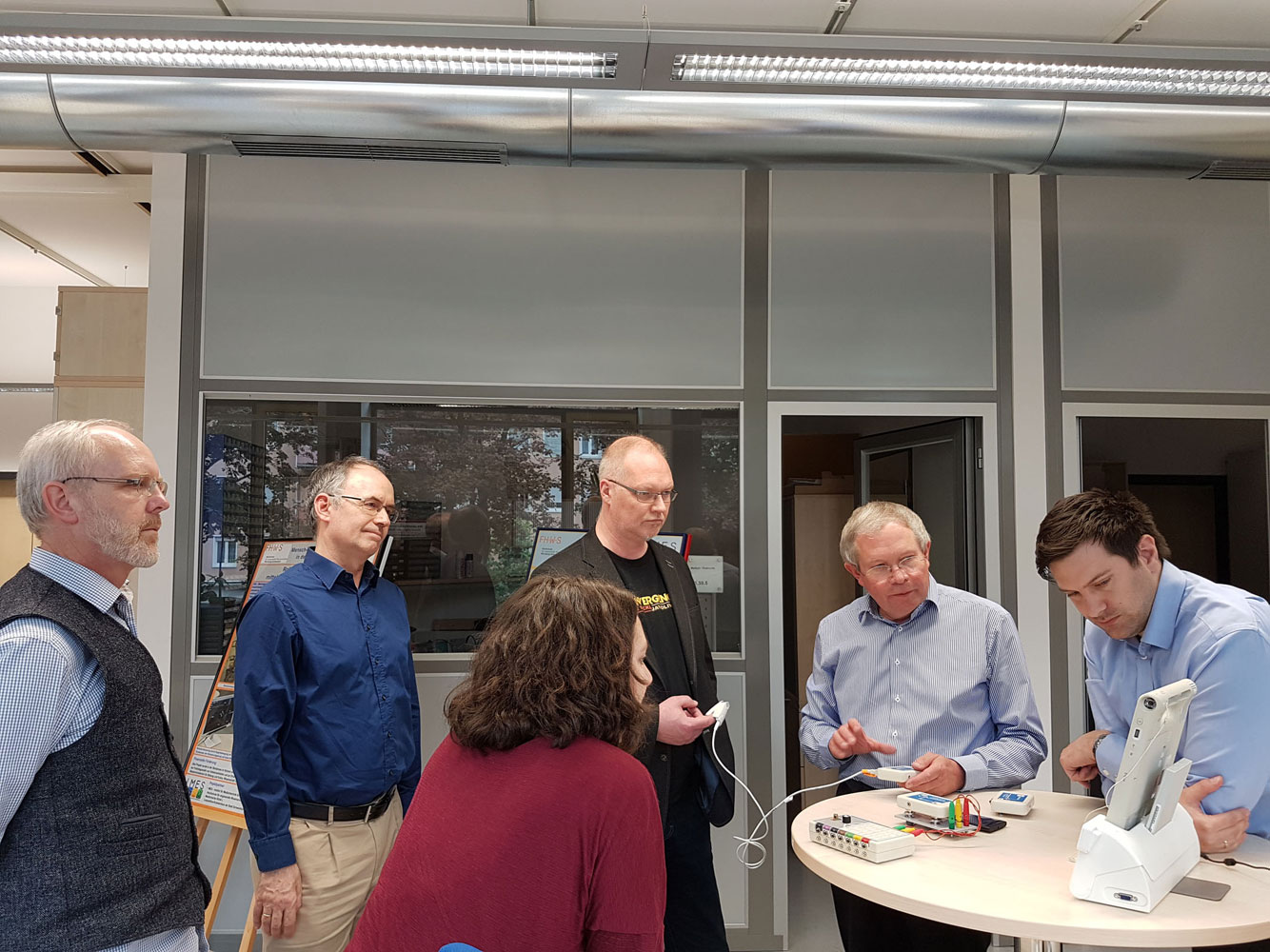Medical Technology Meets Music Therapy: Interdisciplinary Acting of Music Therapeutic Treatment
At the Schweinfurt Institute for Medical Technology (IMES) at the Würzburg-Schweinfurt University of Applied Sciences, music therapists, physicians and medical technicians met for an interdisciplinary exchange of views. The cooperation between the various disciplines is expected to lead to an increase in the quality of music therapy treatment for patients.
Can medical technology support music therapy? How can the therapeutic success of music therapy be measured and quantified digitally? How can smart algorithms and methods of artificial intelligence be used in music therapy? These and similar questions were discussed by the music and psychotherapist Professor Dr. Esa Ala-Ruona from the Finnish University Jyvaskyla, the music therapists Professor Dr. Thomas Wosch and Laura Blauth as well as the physician Professor Dr. Jürgen Seifert from the Faculty of Applied Social Sciences of the FHWS with the medical technicians Ying Zhao, Benedikt Keßler and the medical physicist and head of the Institute for Medical Technology Professor Dr. Walter Kullmann at a meeting at the Schweinfurt Medical Technology Institute.
The discussions focused on mobile measuring systems for the possible detection of vital data such as ECG, pulse, oxygen saturation and blood pressure as part of music therapy measures. Stress states should be quantifiable and measurable. Physiological relationships can be used to make measurement technology as simple and usable as possible and to achieve a comprehensive diagnostic picture using smart algorithms and artificial intelligence. The suitability for use must be given for different therapeutic groups of persons from young people, over adults up to seniors with depressions and dementia equally. At the same time, archiving that can be used directly by the therapist is required.
The use of synergy effects allows the transfer of intelligent electro-optical systems for motion detection in medical rehabilitation to applications in music therapy. Movements while making music and dancing are detected on the body without sensors and analyzed and processed with intelligent software.The eye control of digital communication assistants, as developed in IMES, could also be helpful in music therapy. Severely handicapped patients could use this technology to play musical instruments by changing their viewing direction.
According to Kullmann, the non-invasive detection of brain activity is of great interest in international music therapy. The use of smart algorithms even makes it possible to control musical instruments using the power of thought. A tour with explanations of various medical technology developments of the past years concluded the visit.
At this meeting, the group of interdisciplinary specialists agreed to intensify cooperation in the field of quantifiable music therapy. Concrete plans for interdisciplinary research in a European consortium together with IMES and the Center Health Research of the newly founded IFAS (Institute for Applied Social Sciences) of the FHWS were agreed for the fourth quarter of 2019.





